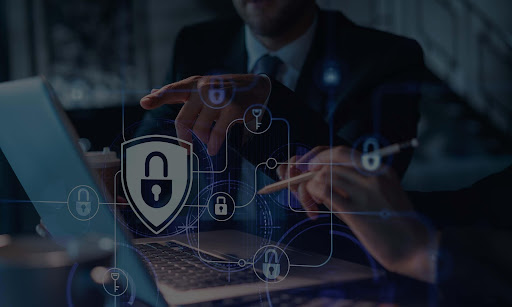
The business world is rapidly changing and has become more data-driven and technologically advanced. Whether hardware or software, organizations must use information technology to improve their operational efficiency, collect more data for analytics and empower their work.
However, with the adoption of cutting-edge technology in modern organizations, the door is widely open for emerging and old cybersecurity concerns. Addressing these cyber threats needs regulations and rules to perform the cybersecurity processes and ensure that businesses won’t break down under cyber-attacks.
Typically, businesses use an internal cybersecurity strategy developed by experts to overcome potential cyber-attacks. However, achieving leading cybersecurity also requires cybersecurity compliance services that adhere to specific industry-specific laws, rules, and standards, referred to as cybersecurity compliance. One way to demonstrate expertise in this area is by hiring a professional with CISSP certification, which covers a broad range of topics related to information security, including compliance with regulatory frameworks and standards.
Although the new industry standards and regulations regarding data and cybersecurity have made compliance more difficult for organizations, remember that cybersecurity compliance is a driving force behind the success of any organization. It is because it is not just a checkbox for government regulations but a formal way to protect your organization from cyber-attacks. In this article, we will discuss how to manage the services of cybersecurity compliance.
Promote Team Communication:
Cybersecurity compliance becomes more complicated when teams are siloed. The IT or security team is on the front lines of cybersecurity regarding attacks, breaches, and solutions to prevent them.
However, they may need to be made aware of the specifics of cybersecurity compliance services and regulatory requirements. Likewise, the compliance team may be familiar with regulatory requirements but must be mindful of current technology capabilities.
The best practice is to promote teamwork and collaboration. It will ensure the best possible solutions are implemented to protect the best interests of your organization.
Setting Controls:
The next and most crucial step is to set up security controls that help to mitigate or transfer cybersecurity risks. Keep in mind that a cybersecurity control is a mechanism to detect, prevent and mitigate threats and cyber-attacks. The controls can be technical controls like passwords and access control lists.
On the other hand, the physical rules are surveillance cameras and fences. The demand for these controls is very high, which has resulted in many new cybersecurity compliance services now available to help.
Other controls include:
- Network firewalls
- Employee training
- Patch management schedule
- Encryption
- Cyber insurance
- Incident response plan
- Password policies
- Access control
Connect Your Tools:
Connecting various management tools through APIs allows users to perform activities with their favorite interfaces on different devices. Using said interfaces can lend insights into a system’s security and streamline operations, as well as improve cybersecurity compliance services in the environment.
Use a Systematic Approach:
Streamlining and organizing information is one of the most critical aspects of cybersecurity compliance services. Therefore, it can be pulled up quickly when the auditor has questions. It will not only make things less time-consuming but also helps to set the tone of the audit.
Many compliance platforms are usually equipped with built-in templates for many regulations. It can reduce the time, effort, and money required to meet cybersecurity compliance obligations.
Find the tools that can offer a single-pane-of-glass view of the organization’s overall risk posture and compliance state.
Continuous Monitoring:
It is a fact that threats are constantly changing. So the new risks often influence changes in rules and standards. Therefore, knowing the specific dangers affecting your data and network is essential.
However, continuous monitoring, internal controls, and ongoing education can help you stay on top of your infrastructure. Moreover, organizations can fallout in cybersecurity compliance services if they need to regularly handle their controls and actions.
Security teams must develop a process of monitoring and fine-tuning cybersecurity systems. In addition, they need to focus on essential factors like updates, security patches, vulnerability checks, and third-party assessments.
If there are gaps, deploy a system that detects security issues and provides proactive alerts. Moreover, many regulations may need the monitoring of suppliers and partners due to security issues.
Document Everything:
The majority of regulators and assessors expect businesses to have documents of demand. That’s why cybersecurity compliance services must deal with everything from processes to security logs to historical data. Additionally, it can be presented as evidence if required.
Set a Risk Analysis Process:
The naming convention will vary by cybersecurity compliance services. Four fundamental steps in the risk analysis process are as follows:
- Identify: You must identify any information systems, assets, or networks that access data.
- Assess: You need to review the data and assess each type’s risk level. After that, rate the risk of all locations that data will revolve in its lifecycle.
- Analyze: Likelihood of Breach x Impact or Cost is one of the best analysis formulas that you can use to determine the risk.
- Set Tolerance: Choose to mitigate, transfer, refute, or accept any figure-out risk.
Conclusion:
Since cyber-attacks are increasing and cybersecurity and data protection is crucial, now is the best time to learn about cybersecurity compliance services. Undeniably, no organization wants to put itself and its customers at risk of data breaches in a threatening cybersecurity environment.
Interesting Related Article: “Cybersecurity trends to watch out in 2023“
